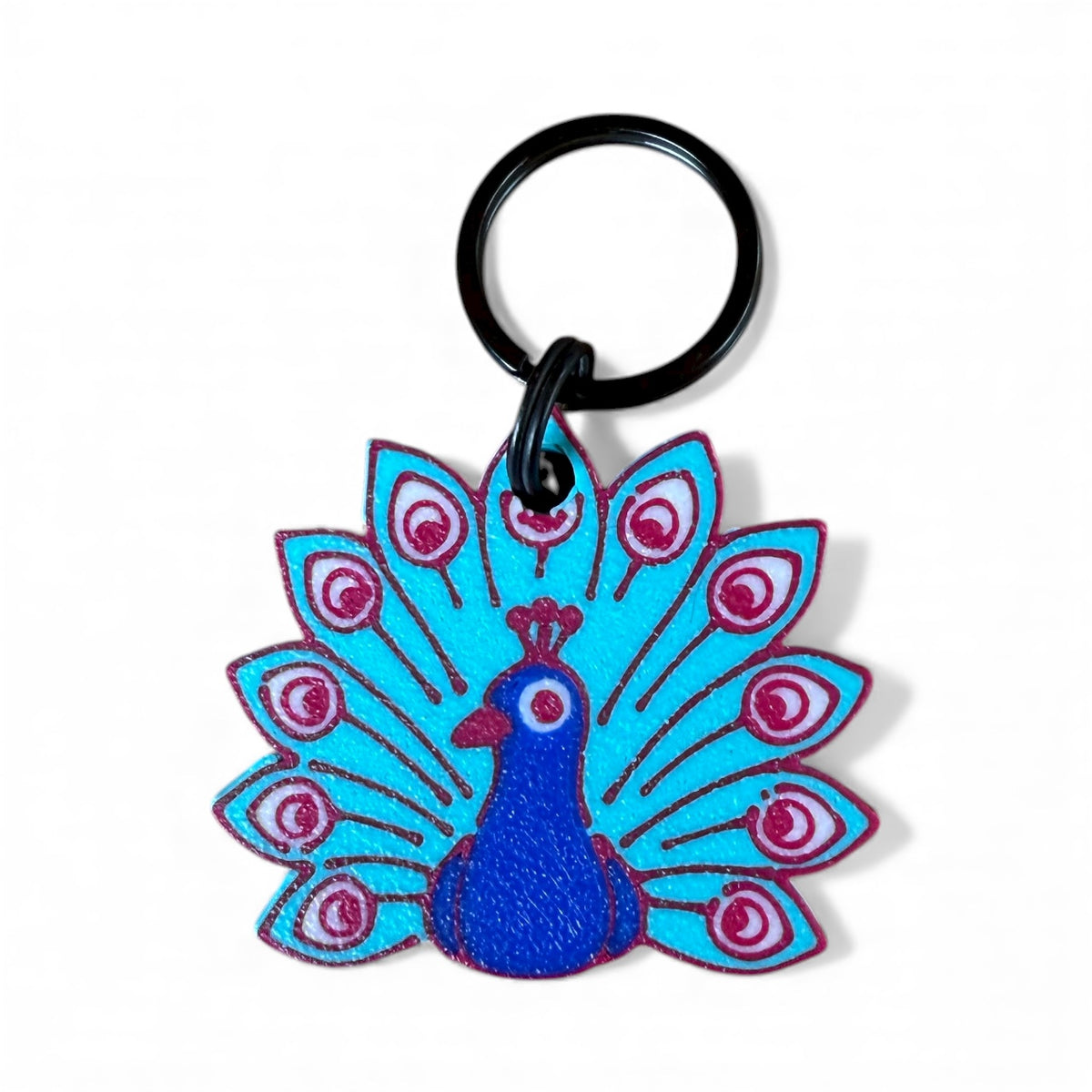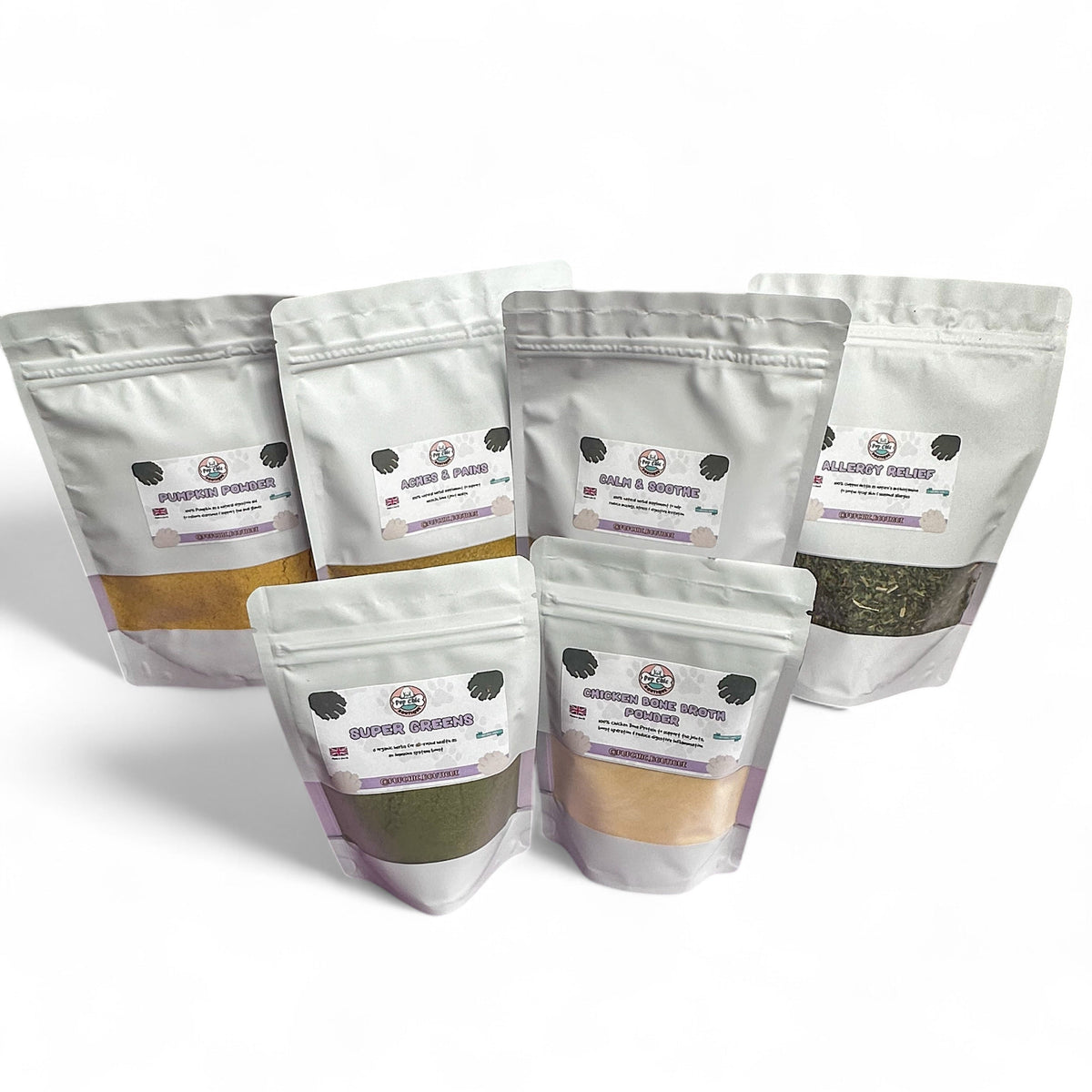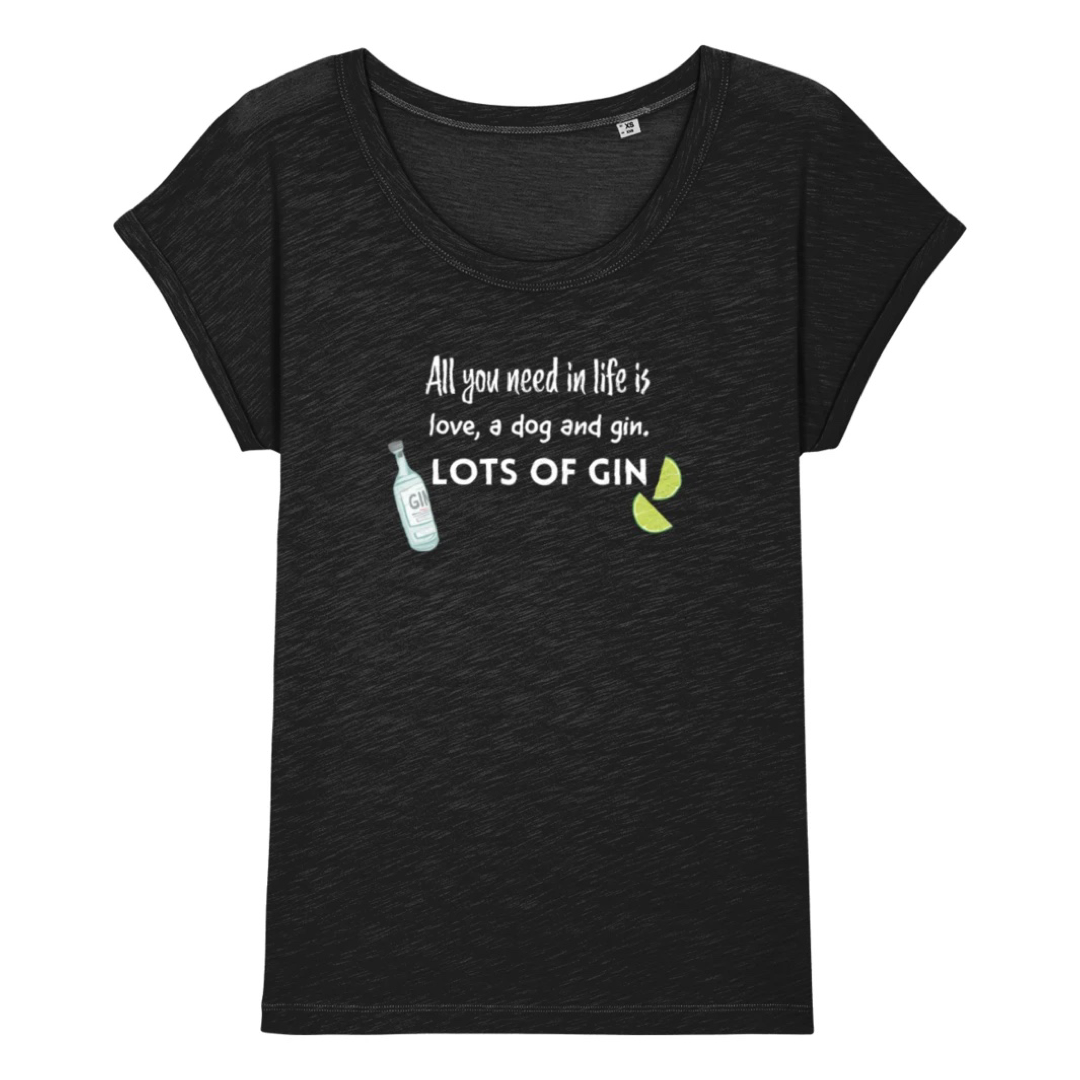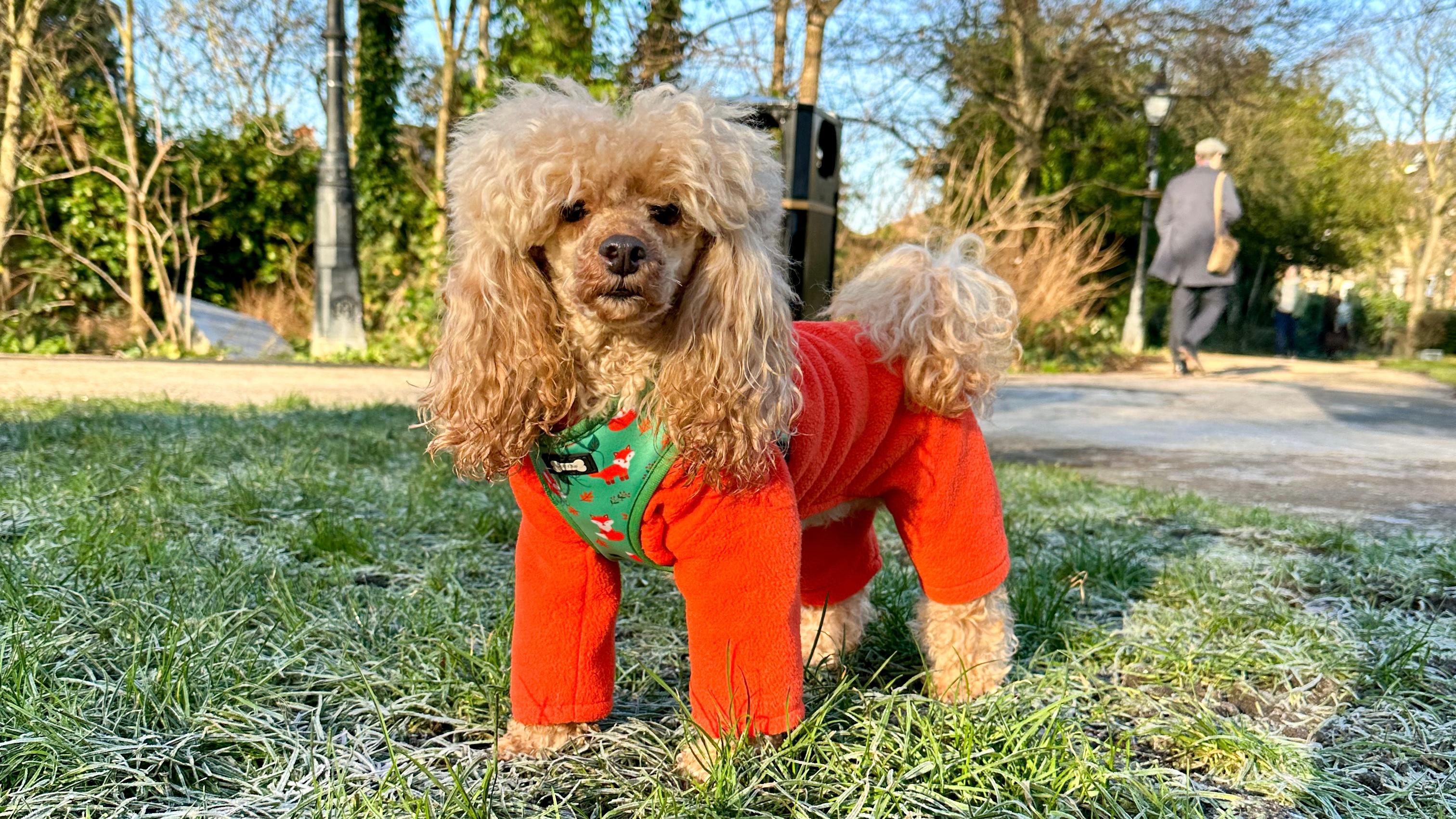
Cold weather might look charming through the window, but for dogs across the UK it can bring real and sometimes hidden dangers. Fluffy coats do not guarantee warmth and some breeds face a much higher risk than others. In fact, dogs with thin coats and low body fat are the most vulnerable, making them up to twice as likely to suffer in low temperatures. Many believe that a quick walk or a cosy bed is enough, but keeping your dog safe in winter calls for a closer look at the facts and a shift in how we prepare for the chill.
Table of Contents
Quick Summary
| Takeaway | Explanation |
| Identify vulnerable breeds for winter | Dogs with short coats or low body fat need extra protection against cold temperatures. |
| Provide a warm indoor environment | Ensure your dog has a warm and draft-free resting area with proper bedding during winter months. |
| Limit outdoor exposure in extreme cold | Shorter, more frequent walks reduce cold exposure while still providing necessary exercise for your dog. |
| Use protective gear for outdoor walks | Equip your dog with winter jackets and boots to prevent cold-related injuries during outdoor activities. |
| Maintain hydration and proper nutrition | Ensure your dog has access to fresh water and consider dietary adjustments to meet increased energy needs in winter. |
Understanding Cold Weather Risks for Dogs
Cold weather presents significant challenges for dogs, impacting their health and wellbeing in ways many pet owners might not immediately recognise. While dogs have natural protective mechanisms, certain breeds and individual characteristics make them more vulnerable to cold weather hazards.
Breed-Specific Cold Weather Vulnerabilities
Not all dogs are equally equipped to handle low temperatures. According to the RSPCA, dogs with short coats like greyhounds and Staffordshire bull terriers are particularly susceptible to cold weather challenges. These breeds lack the dense fur protection that many other dogs naturally possess, making them more vulnerable to temperature drops.
Small breeds, senior dogs, and those with pre-existing health conditions face even greater risks. Chihuahuas, miniature breeds, and dogs with low body fat percentages struggle to maintain their core body temperature, increasing their risk of hypothermia and other cold-related health issues. Puppies and elderly dogs have less efficient temperature regulation systems, further compounding their vulnerability.
The following table compares dog breeds and characteristics that make them more or less vulnerable to cold weather, as discussed in the article. Use it to quickly identify which dogs need extra care during winter.
| Breed/Characteristic | Vulnerability to Cold | Reason for Vulnerability |
| Short-coated (e.g., Greyhound) | High | Lack of dense fur, poor heat retention |
| Staffordshire bull terrier | High | Short coat, low insulation |
| Chihuahua/miniature breeds | High | Small size, low body fat, thin fur |
| Senior dogs | High | Impaired temperature regulation |
| Dogs with pre-existing conditions | High | Weaker health, difficulties with heat retention |
| Puppies | High | Underdeveloped temperature regulation |
| Thick-coated breeds (e.g., Husky) | Lower | Dense fur provides better insulation |
Health Risks Associated with Cold Exposure
Blue Cross warns that prolonged exposure to cold temperatures can lead to serious health complications for dogs. Hypothermia represents a critical risk, occurring when a dog’s body temperature drops below normal levels. Symptoms include violent shivering, lethargy, weakness, and in severe cases, potentially life-threatening complications.
Arthritis and joint problems become more pronounced during colder months. Dogs with existing joint conditions may experience increased pain and stiffness when temperatures plummet. The cold can cause muscles to contract and joints to stiffen, making movement more challenging and uncomfortable for your furry companion.
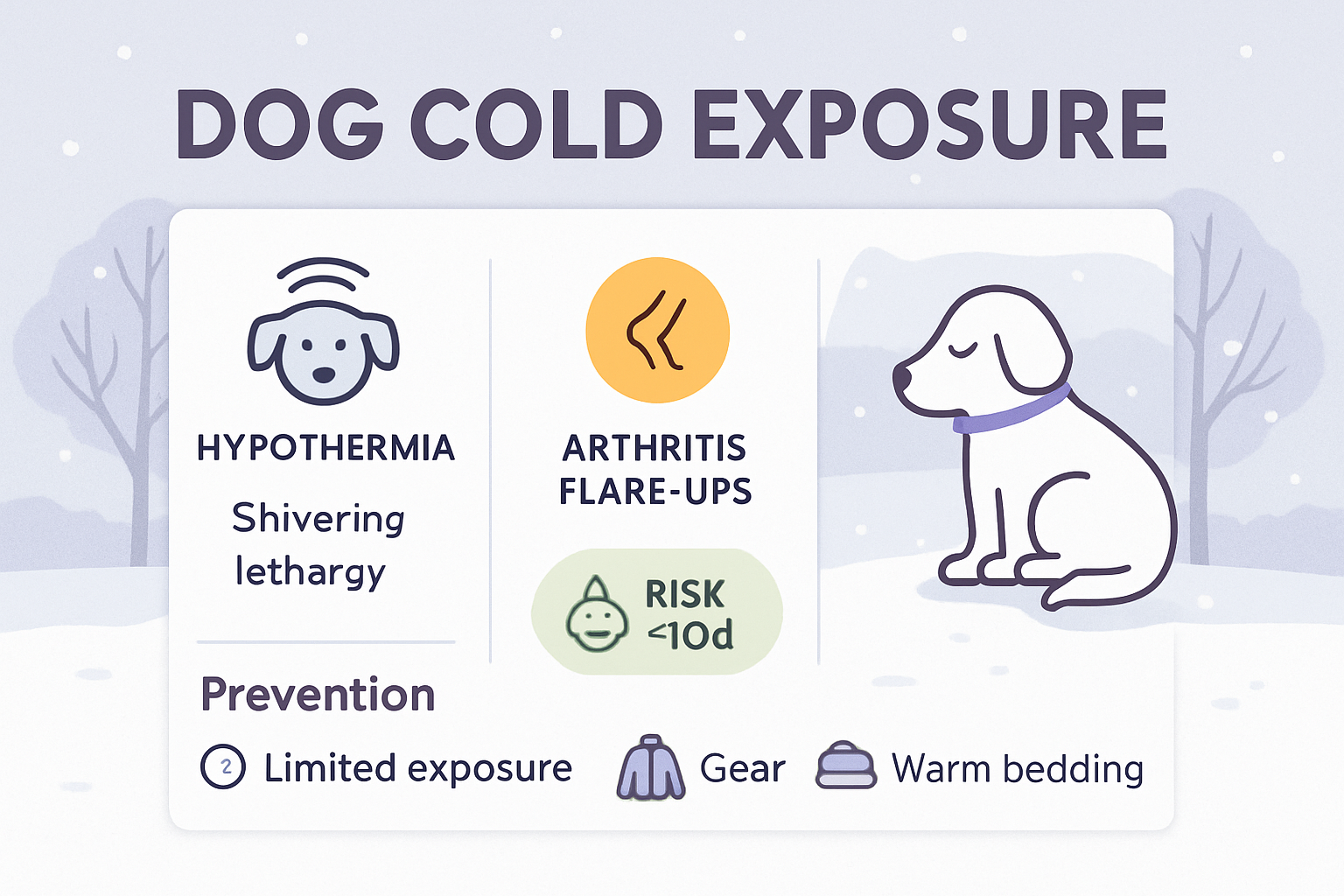
Recognising and Preventing Cold Weather Dangers
Pet owners must remain vigilant and proactive in protecting their dogs from cold weather risks. This involves understanding individual dog characteristics, monitoring outdoor exposure, and implementing protective strategies. Recognising early signs of cold stress is crucial for preventing more serious health complications.
Key prevention strategies include limiting outdoor time during extreme cold, providing warm shelter, using appropriate dog clothing for short-coated or vulnerable breeds, and ensuring dogs have a warm, draught-free resting area. Regular monitoring of your dog’s behaviour and physical condition during winter months can help identify potential cold-related health issues before they become serious.
Understanding these risks empowers dog owners to make informed decisions about their pet’s winter care, ensuring their beloved companions remain healthy, comfortable, and safe during the coldest months of the year.
Preparing Your Dog for Winter Conditions
As winter approaches, dog owners must take proactive steps to ensure their furry companions remain safe, comfortable, and healthy during the cold months. Proper preparation involves understanding your dog’s specific needs and implementing comprehensive winter care strategies.
Winter Wardrobe and Protection
Blue Cross recommends tailoring winter protection to your dog’s individual characteristics. For short-coated breeds like greyhounds or chihuahuas, investing in a well-fitted dog coat becomes essential. These protective garments help maintain body heat and prevent rapid heat loss during outdoor activities.
Paw protection is equally crucial. Winter surfaces can be harsh, with salt, grit, and freezing temperatures causing potential damage. Consider using doggy winter boots to shield sensitive paw pads from cold surfaces and harmful de-icing chemicals. After walks, always thoroughly wipe your dog’s paws to remove any salt or chemical residues that could cause irritation or be accidentally ingested.
Indoor Comfort and Warmth
Creating a warm indoor environment is fundamental to your dog’s winter well-being. According to the UK Government’s winter pet care guidance, ensuring a warm, draught-free resting area is critical. Position your dog’s bed away from cold windows and drafts, and provide thick, insulating blankets that help retain body heat.
Maintain a consistent indoor temperature, avoiding sudden temperature fluctuations that can stress your dog’s system. For dogs that spend significant time indoors, consider using pet-safe heating pads or creating a cozy nook with additional blankets. Older dogs and those with health conditions are particularly sensitive to cold, so extra attention to their comfort is paramount.
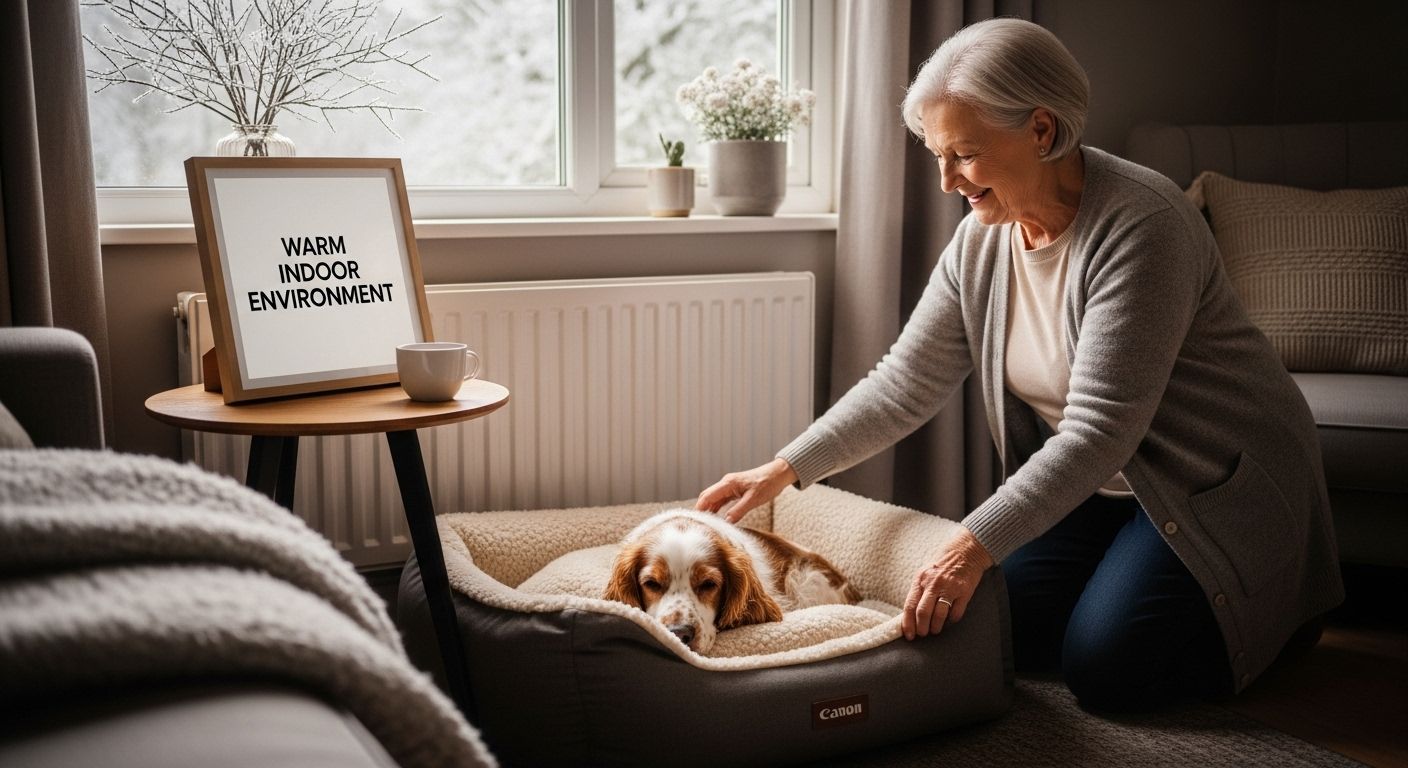
Outdoor Care and Exercise Modifications
Winter exercise requires careful planning and adaptation. Limit outdoor time during extreme cold, especially for vulnerable dogs like puppies, seniors, or those with health issues. When walking, choose shorter, more frequent outings rather than prolonged exposure to cold temperatures.
Be mindful of your dog’s energy needs during winter. Dogs may burn more calories maintaining body heat, so consult with your veterinarian about potential dietary adjustments. Ensure constant access to fresh, unfrozen water, and monitor your dog closely for signs of discomfort or cold stress during outdoor activities.
This table summarises recommended indoor and outdoor winter care adjustments for your dog, helping you prioritise essential measures during the colder months as outlined in the article.
| Care Area | Key Actions | Why It’s Important |
| Indoor Comfort | Provide draught-free bedding, use thick blankets | Prevents heat loss and discomfort |
| Temperature Control | Maintain stable, warm indoor temperature | Avoids stress from sudden temperature shifts |
| Outdoor Protection | Use jackets, boots, limit time outside | Reduces risk of cold injuries/hypothermia |
| Paw Care | Wipe paws after walks, check for salt or ice | Prevents irritation and ingestion of toxins |
| Nutrition & Water | Ensure fresh water; consult vet for dietary needs | Supports energy needs and hydration |
| Exercise Modifications | Shorter, more frequent walks, indoor activities | Maintains physical health and safety |
Preparation is key to navigating winter safely with your canine companion. By understanding their unique needs, providing appropriate protection, and making thoughtful adjustments to their routine, you can help your dog not just survive but thrive during the coldest months of the year.
Safe Outdoor Activities and Walks in Cold Weather
Navigating outdoor activities during winter requires careful planning and strategic approach to ensure your dog remains healthy, active, and protected from cold weather risks. Understanding how to modify exercise routines and engage in safe winter activities is crucial for maintaining your dog’s physical and mental well-being.
Strategic Walking Techniques
ASPCA recommends adjusting walking patterns during cold weather to minimise potential health risks. Instead of prolonged single walks, opt for multiple shorter walks throughout the day. This approach helps limit cold exposure while still providing necessary exercise and mental stimulation.
Timing becomes critical during winter walks. Choose daylight hours when temperatures are relatively warmer and sunlight provides additional warmth. Avoid walking during the coldest parts of the day, typically early morning and late evening. Pay attention to wind chill factors, which can significantly decrease ambient temperature and increase risk of cold-related health issues.
Winter Exercise Alternatives
Indoor activities offer excellent alternatives when outdoor conditions become too harsh. Interactive games like indoor fetch, hide and seek, and puzzle toys can provide mental and physical engagement. Stair exercises, where dogs walk up and down controlled flights, can help maintain fitness levels without prolonged cold exposure.
Consider indoor training sessions that focus on obedience, learning new tricks, or practicing existing commands. These activities not only provide exercise but also strengthen the bond between you and your dog. For high-energy breeds that require substantial physical activity, consider indoor dog training facilities or supervised play areas that offer controlled environments.
Safety Precautions and Monitoring
Prepare for winter walks by implementing protective measures. Use dog-specific winter gear like insulated jackets, boots, and reflective clothing to enhance visibility and warmth. Always monitor your dog’s behaviour during outdoor activities, watching for signs of discomfort such as shivering, reluctance to move, or lifting paws off the ground.
After each walk, thoroughly clean and dry your dog’s paws to remove potential ice, salt, and chemical residues. Check for any signs of irritation or small cuts caused by frozen surfaces or de-icing substances. Maintaining a consistent post-walk routine helps prevent potential winter-related paw injuries and keeps your dog comfortable.
Adapting your approach to winter activities requires flexibility, observation, and proactive care. By understanding your dog’s individual needs and implementing thoughtful strategies, you can ensure safe, enjoyable outdoor experiences throughout the coldest months of the year.
Indoor Care Tips for Warm and Healthy Dogs
Maintaining your dog’s health and comfort during winter extends beyond outdoor protection. Indoor care becomes crucial in ensuring your furry companion remains warm, happy, and healthy throughout the colder months.
Creating a Warm Indoor Environment
ASPCA emphasises the importance of providing a warm, draft-free sleeping area for dogs during winter. Choose a location away from windows and external walls, preferably in a room with consistent temperature. Use thick, insulating blankets and consider elevating your dog’s bed slightly off cold floors to provide additional warmth.
For short-haired or small breed dogs, additional warmth strategies might include pet sweaters or extra layers. However, ensure these garments fit comfortably and do not restrict movement. Some dogs may find indoor clothing uncomfortable, so observe your pet’s reaction and comfort level.
Nutrition and Hydration Adjustments
Winter metabolic changes require careful nutritional management. Dogs often burn more calories maintaining body heat, potentially necessitating slight dietary adjustments. Consult with your veterinarian about potential increases in calorie intake or modifications to your dog’s diet during colder months.
Hydration remains critical, even when temperatures drop. Ensure fresh water is always available and check regularly that it hasn’t frozen or become too cold. Some dogs might drink less during winter, so encourage water intake by slightly warming water or using heated water bowls.
Mental Stimulation and Indoor Exercise
Reduced outdoor activity can lead to potential boredom and decreased physical exercise. Combat this by introducing engaging indoor activities that provide mental and physical stimulation. Puzzle toys, indoor training sessions, and interactive games can help maintain your dog’s mental sharpness and prevent weight gain.
Consider creating indoor obstacle courses or teaching new tricks that challenge your dog’s cognitive abilities. Short, frequent training sessions not only provide exercise but also strengthen the bond between you and your pet. For high-energy breeds, consider indoor fetch, tug-of-war, or supervised play that allows controlled movement.
Winter indoor care is about balancing physical comfort, nutritional needs, and mental engagement. By creating a warm, stimulating environment and paying attention to your dog’s individual requirements, you can ensure they remain healthy, happy, and comfortable throughout the coldest months of the year.
Frequently Asked Questions
What are the signs of cold stress in dogs?
Signs of cold stress in dogs include shivering, lethargy, weakness, reluctance to move, and lifting their paws off the ground due to discomfort. Monitoring your dog for these symptoms can help prevent serious health complications.
Which dog breeds are more vulnerable to cold weather?
Breeds that are more vulnerable to cold weather include short-coated dogs like greyhounds and Staffordshire bull terriers, small breeds such as Chihuahuas, senior dogs, puppies, and those with pre-existing health conditions or low body fat.
How can I protect my dog’s paws in winter?
To protect your dog’s paws in winter, consider using doggy winter boots to shield their paw pads from cold surfaces and harmful de-icing chemicals. After walks, wipe their paws thoroughly to remove any salt or chemical residues.
What adjustments should I make to my dog’s diet during winter?
During winter, dogs may require slight dietary adjustments as they expend more energy to maintain body heat. Consult your veterinarian about possible increases in calorie intake or modifications to their diet to meet their winter needs.
Keep Your Dog Cosy and Safe This Winter
Struggling to keep your pup warm and comfortable when temperatures drop? As the article highlights, dogs with thin coats or sensitive paws really feel the chill during cold spells. Even with the best winter care tips, you may worry about their exposure to the cold, slipping on icy pavements, or discomfort from draughts. Your wish is to find protection that actually works for their needs and adds a touch of style, whether out for brisk walks or snuggling at home.

Help your four-legged friend thrive, not just survive, this winter. Discover our specially designed dog accessories and apparel at Pup Chic Boutique. Our UK-inspired coats, insulated harnesses, sturdy leads, and easy-to-clean boots are perfect for winter walks, while our soft bedding and treats keep tails wagging indoors. See our range at https://pupchic.boutique and choose warmth, comfort and personality for your dog today. Give them the protection and flair they deserve before the next cold front arrives.
Recommended
-
The Ultimate Guide to Comfort and Safety: Adjustable Harnesses for Ner – Pup Chic Boutique
-
How to Keep Your Dog Cool in Hot Weather | Summer Dog Tips – Pup Chic Boutique
-
The Importance of Dog Coats in Cold Weather: Keeping Your Furry Friend – Pup Chic Boutique
-
Collar or Harness for Your Dog: Making the Right Choice – Pup Chic Boutique
-
[
Winter Safety for Your Dog: Tips to Keep Your Furry Friend Safe and Wa
– iPupPee
